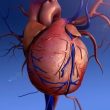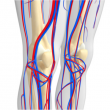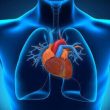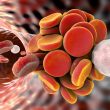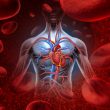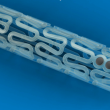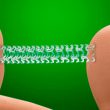The role of human immunodeficiency virus (HIV) in the development of vascular disease (specifically peripheral artery disease) remains unclear. Is the virus per se the direct cause of this disease or is it a consequence of dyslipidemia, one of the adverse effects of antiretrovirals? This study looked into the effect of HIV infection on peripheral...
What’s New in the European Guidelines on Peripheral Arterial Disease
Since the last version of the European guidelines on the diagnosis and treatment of peripheral arterial disease in 2011, there have been many trials and registries that warrant guideline adjustments in many aspects. The first novelty is the teamwork that gave way to these guidelines, which were written in collaboration with the European Society of...
CLACE 2018: Latin American Congress on Structural Heart Disease
The 10th edition of the Latin American Congress on Structural Heart Disease (CLACE, its acronym in Spanish), founded by Dr. Antonio Enrique Dager Gómez, will take place from April 25th to April 27th in Cali, Colombia. This event addresses several cardiovascular topics (hemodynamics, endovascular intervention for peripheral vascular disease, coronary artery disease and related advancements, endovascular...
Lung Disease and TAVR: Beneficial for a Reduced Group of Patients
Chronic Lung Disease often affects patients with severe aortic stenosis undergoing transcatheter aortic valve replacement (TAVR) or surgery. In fact, this is why patients with lung disease are often deemed inoperable and prescribed TAVR. This is the first time the benefit of TAVR has been assessed in this group of patients, for symptoms of these conditions can...
COMPASS: A New Place for Rivaroxaban in Chronic Ischemic Heart Disease
Combining low doses of rivaroxaban and aspirin seems to be the best strategy for patients with stable chronic ischemic heart disease, according to this new study presented at the European Society of Cardiology Congress 2017, which was published simultaneously in the New England Journal of Medicine. Compared with low-dose aspirin alone, the combination of aspirin...
Risk of Thrombosis and Bleeding with Peripheral Artery Disease and Concomitants
Peripheral artery disease (PAD) is no longer a systemic manifestation of atherosclerosis. In fact, 2 in 3 people with PAD have concomitant heart disease, and 1 in 3 people has concomitant PAD. To understand the real dimension of this problem, we should know that PAD patients have 60% more risk of acute myocardial infarction...
Peripheral artery disease associated to ischemic and bleeding events after DES implantation
Patients with peripheral artery disease (PAD) have higher rates of cardiovascular events after DES implantation, which could be explained partly by higher platelet reactivity. The present work studies the relationship between platelet reactivity and clinical events after PCI in patients with and without a history of peripheral artery disease. The ADAPT-DES study (Assessment of...
Bioresorbable Scaffolds: Promising in Peripheral Territory
Bioresorbable Vascular Scaffolds (BVS) could change the paradigm of peripheral angioplasty according to several small studies suggesting these everolimus eluting devices could significantly improve symptoms in patients with intermittent claudication. [plain] Three year outcomes of the ESPRIT I trial, presented at VIVA 2016 (held in Las Vegas) showed there were no new events between...
Does Ticagrelor Reduce Events in Peripheral Artery Disease?
Original Title: Ticagrelor for Prevention of Ischemic Events after Myocardial Infarction in Patients with Peripheral Artery Disease. Reference: Marc P. Bonaca et al. J Am Coll Cardiol. 2016 Jun 14;67(23):2719-28. Peripheral artery disease is associated with high rates of ischemic and bleeding events in patients with prior myocardial infarction. This study evaluates the safety...
BVS: Safe Also in Peripheral Territory
Original Title: Bioresorbable Everolimus-Eluting Vascular Scaffold for Patients With Peripheral Artery Disease (ESPRIT I) 2-Year Clinical and Imaging Results CME. Reference: Johannes Lammer et al. J Am Coll Cardiol Intv. 2016;9(11):1178-1187. This is the first study on humans to assess the bioresorbable everolimus eluting vascular scaffold for the treatment of peripheral artery disease involving...
